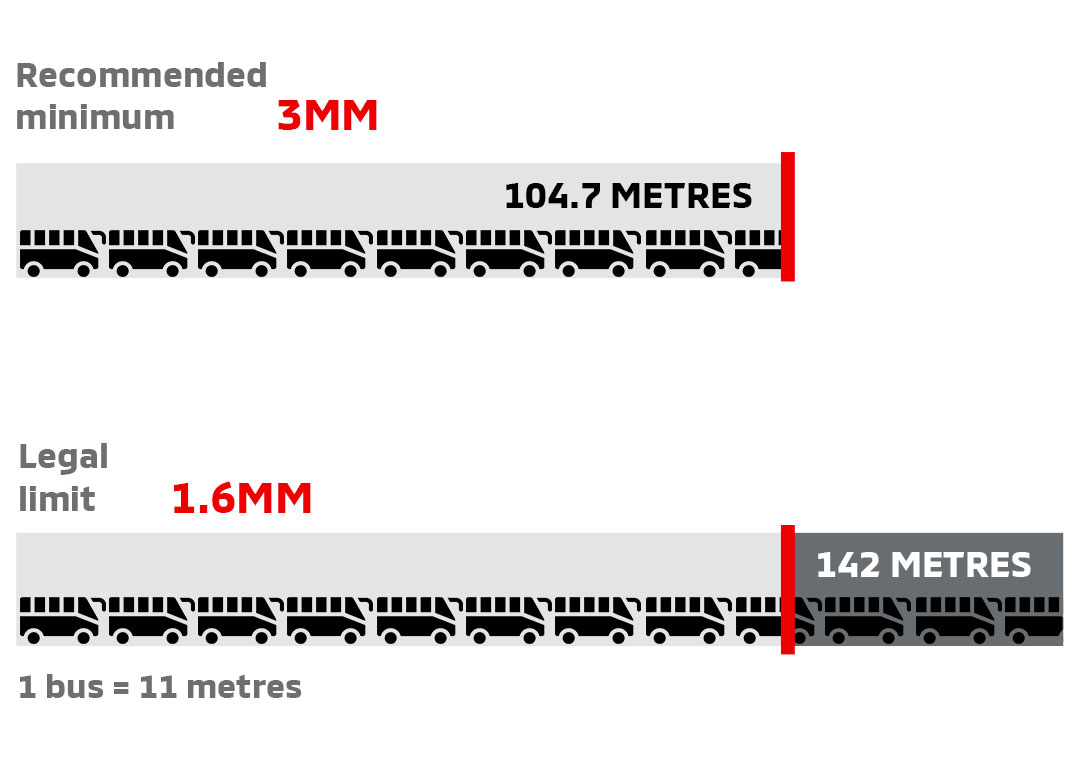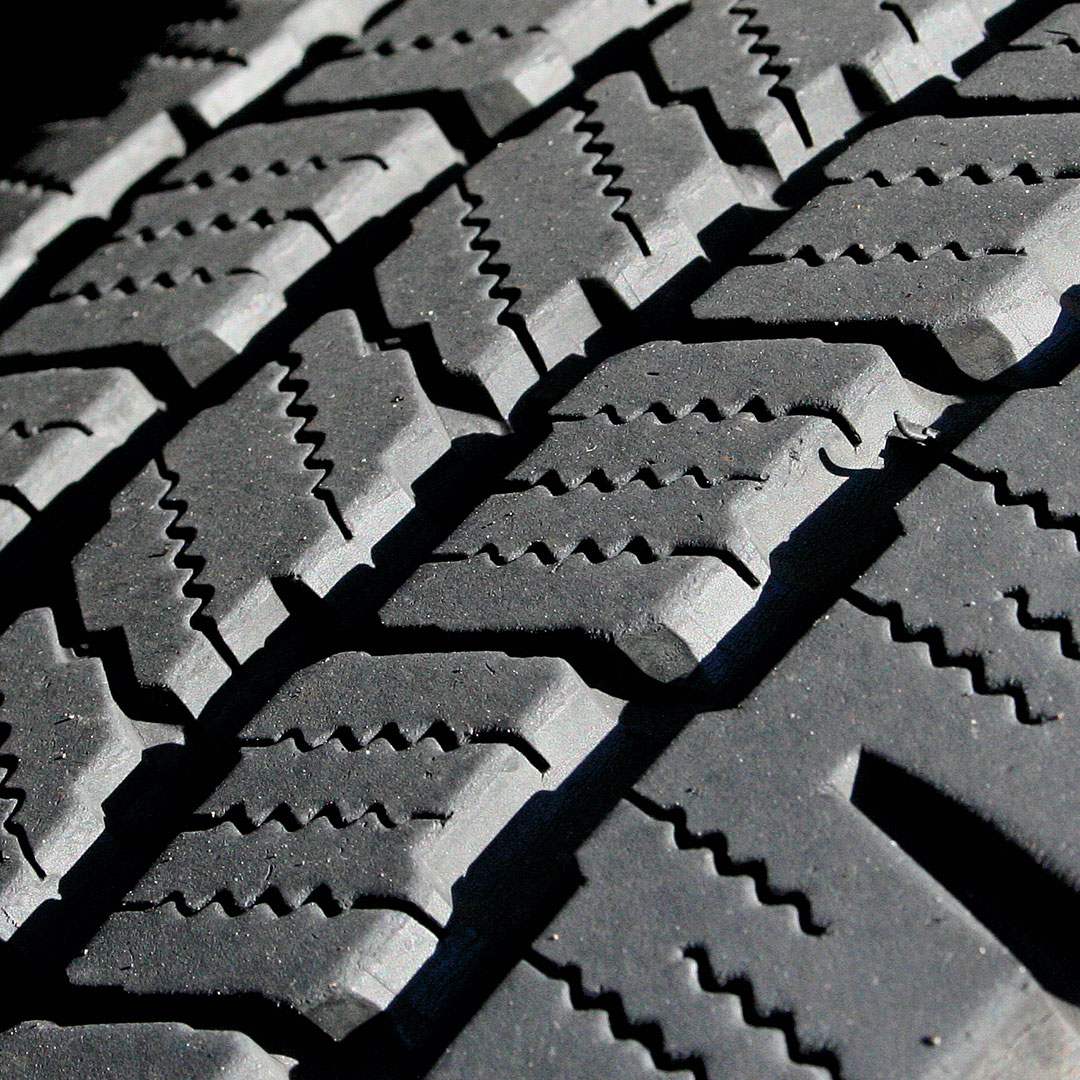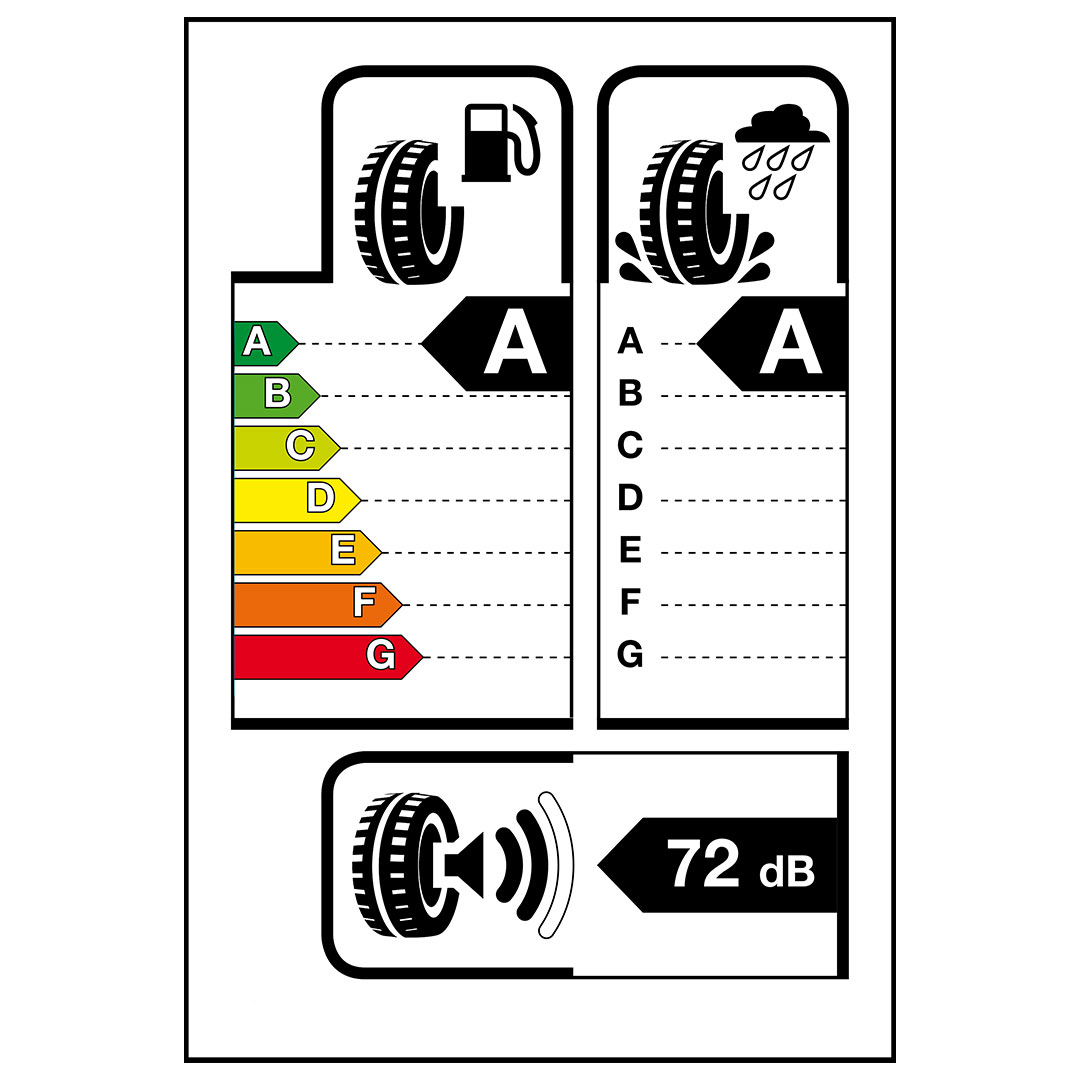Tyre Safety and Maintenance Guide
Tyre safety and maintenance
It’s easy to forget what an important function your tyres perform. A loss of quality and performance in your tyres reduces the effectiveness of braking, steering and acceleration, all of which are vital for safety whilst driving.

We recommend that you check the condition of your tyres (including the spare tyre, where applicable) at least once a month, and before any long journey. This includes a simple visual inspection of your tyres as well ensuring that your car has the correct tyre pressure. Driving on under or over inflated tyres, your vehicle’s handling could be seriously affected, and in the long term the wrong tyre pressure could increase tyre wear and potentially cause tyre failure.
Tyre splits and bulges

Stopping distance chart


Tyre labelling
On the Label
Fuel efficiency (rolling resistance)
Your choice of tyres can affect your fuel consumptions by as much as 7.5%. Fuel efficiency is graded from A (most efficient) to G (least efficient).
Wet grip
The same A-G scale is also used to show wet grip performance, with an overall difference in braking distance between the best and worst performing tyres of around 30%.
Noise
The lower part of the label shows exterior noise levels on a scale of one to three ‘sound waves’. Three ‘sound waves’ shows that the tyre meets the current European limit for noise, whereas a single ‘sound wave’ shows that the tyre’s noise level is 3 decibels better than the future European limit.
Get your tyres checked by the experts
Visit your local Mitsubishi dealer and our trained technicians will carry out thorough checks to ensure your tyres are roadworthy, safe and legal. We will check tread depth and pressure as well as inspect your tyres for any wear or damage.

